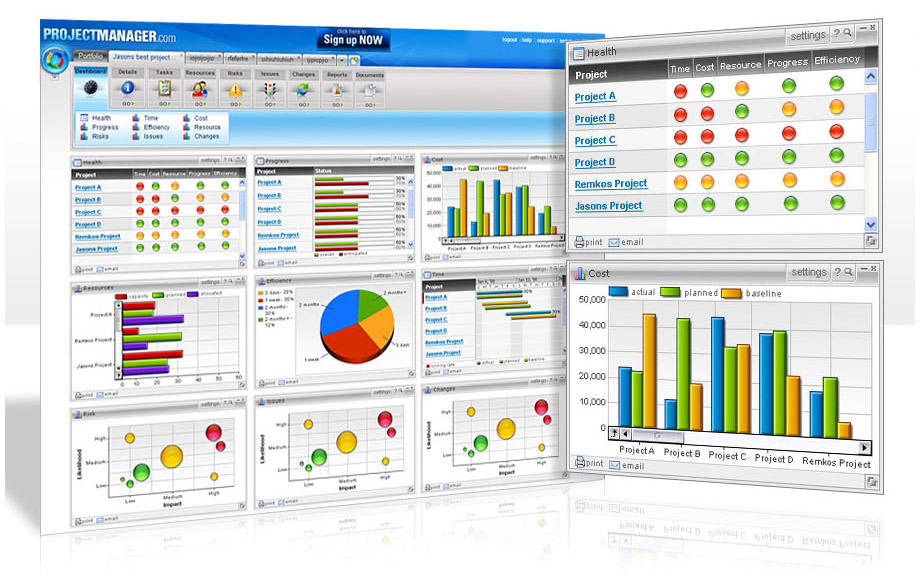Marketing Alignment with Business Outcomes: Keys to a Solid Dashboard

Live blog post from the Online Marketing Summit – Day 1 #OMSummit. Presented by Laura Patterson, VisionEdge Marketing. Author of Marketing Metrics in Action – Creating a Performance Driven Marketing Organization.
(Editors Note: Sorry about any spacing issues. They will be fixed)
Why Companies Invest in Marketing
- Acquire more of something faster and less expensively (higher ROI)
- Need to demonstrate we are getting the job done. Otherwise we might as well put more feet on the street.
- “The top challenge for marketers remains to better quantify and measure the value of marketing programs in spite of improvements in accountability over previous years” – CMO Council
- Our job is to create customers
We’re in a pickle…
1. Executive management wants to be able to determine marketing’s true impact
2.As long as marketing is viewed as a cost instead of an investment our budgets will always be on the chopping block
3. Need to arm ourselves with the tools and associated languages necessary to demonstrate we are are generating sustainable, measurable value.
Three Key Shirts We Must Make
- Speak the Language of Business
- Create clear line of sight between marketing activities and investments with business outcomes.
- Select and report relevant metrics.
Marketing Plan says “Here’s what we plan to do and here’s what it will produce.”
Most are in powerpoint. Sometimes word or excel, but usually in powerpoint.
Marketers lack commercial acumen and don’t speak the language of the business, reporting their contributions in terms of “activities” or “outputs”.
Senior Management Vs Marketing
Earnings vs Brand
Revenue vs Impressions, “leads”
Value vs Cost
Customer Value vs Satisfaction, fans, followers
Shareholder Value vs GROs, CMPs, opens, clicks
Why Measure? It’s Hard!
- Communicate Impact
- Be seen as accountable
- Demonstrate financial value
- Enable us work smarter
- Provide a current picture (market share, product margins, close rate)
- Indicate future performance (projected revenue, share of wallet, net advocacy)
- Empower marketing – influence decisions, recommend actions, play a strategic role.
CEO feedback on study what they graded their marketing teams
A: Marketing was able to measure and report the contribution of it’s program to business – only 25% got this grade.
B: Marketing programs made a difference but he contribution to the business goals were not measured
*** A’s have a game plan for performance management:
- Alignment
- Accountability
- Analytics
- Automation
- Alliances
- Assessment
Performance Management – the process of measuring progress toward achieving key outcomes and objectives in order to optimize individual, group or organizational performance.
Today’s marketing requires better data, analytics, forecasting, modelling, etc.
Performance Reporting
- What are the performance targets (this is one of the most overlooked and ridiculous oversights out there). Set Targets and goals!!
- Accountability reams reporting
- Reporting leads us to a dashboard
- Effective dashboard begin with strategic analysis that includes performance target setting and alignment of the marketing strategy with the business strategy
- By consolidating KPIs into a dashboard, marketing executives and personnel can track and manage performance, provide information to upper management, etc.
- Dashboards play a critical role in communicating value, enabling course corrections, and investment allocations.
- What was the promise to outcome, timeframe and cost and how did you compare?
Start with Alignment
Although there are usually clear objectives set for marketing, the lack of alignment between the business and marketing makes it difficult to measure marketing’s contribution, perpetuating the questions, “is marketing an investment or overhead?” – the Capsicum Report, 2012.
Concept Illustration – Alignment (see VisionEdge Marketing Accelance Blueprint Example)
Map these out for your own organizations.
A Marketing Dashboard Defined:
- Has all necessary indicators on it to say you’re in trouble or not, or doing well
- Enables organizations to measure, monitor and manage business activities using both financial and non-financial measures
- Know how to best allocate future resources
DASHBOARD BOOK by Stephen Few – Worth the read!
Only Three Things Marketers Need to Do:
- Find / Secure Profitable Customers (Acquisition) – market share
- Keep Customers (Penetration) – lifetime value
- Grow the Value of Customers (Monetization) – brand / customer equity
5 Signs you have a good dashboard:
- Multidimensional view of data and their interrelationships
- Communicates marketing contribution
- Creates closer alignment with other parts of the business
- Alerts users to values that are significantly above or below expectations
- Facilitates action and changed direction (tells you what to do and what to focus on)
Dashboard Building Blocks
- Metrics and KPIs – figure out what they are (somewhere between 8 – 20 only!)
- Metric – a numerical measure that represents a piece of business data (ex # of customer conversations / week / conversion rate)
- KPIs – A Metric that is tied to a target disigned to provide visibility into performance
What Questions Should EVERY Program Ask – for EVERY project?
- What business outcome are we trying to impact?
- How do you expect this program / activity to contribute (what needle needs to move and how far)
- How will we know and measure that this program achieved the objective(s)?
- What metrics would you expect to see?
- What data will help you understand our current state?
- What data and measures will communicate the program’s effectiveness and value?
Three Layers to the Marketing Dashboard
- Executive Level (Bosses and Owners)
- Operational Level (Management)
- Tactical Level (Front Line)
Planning, analytics, measurement, and reporting tool – what’s your blueprint?
- Tactics – Tactical Level
- Program – Tactical level / Operational level
- Objective – Operational Level / Executive Level
- Outcome – Executive Level
You should be setting:
- Target: ____
- Actual: ____
- Variance: ____
- Data Source: ____
Three Layers to the Marketing Dashboard
- Executive Level (Bosses and Owners)
- Operational Level (Management)
- Tactical Level (Front Line)
Start with the Dashboard Purpose
- Who are the dashboard stakeholders
- How will they use the dashboard
- What decisions do you want them to be able to make?
Creating a proper dashboard takes about 18 months to do properly
ESSENTIAL METRICS ON AN Executive Dashboard – a minimum of 6 items to report on:
- customer acquisition and retention #s
- customer advocacy and vlaue
- customer equity
- product innovation and adoption
- competiive positioning / market value index (rate of growth, share of preference)
- sales results
Excuses to avoid:
“Tracking isn’t possible”
“Data isn’t clean”
“Data isn’t avaialbe”
“No systems or tools”
Figure out how to overcome these. Execuses should not stop you!
A leader only think about these things:
- Multi-touch (attribution)
- Multi-Channel (attribution)
- Data and analytics
- Value and Impact.
